Validation of a Lumped Parameter Model of the Battery Thermal Management System of a Hybrid Train by Means of Ultrasonic Clamp-On Flow Sensor Measurements and Hydronic Optimization
Abstract
1. Introduction
2. Materials and Methods
2.1. System Architecture and Description
2.2. Ultrasonic Clamp-On Flow Measurements
2.3. Numerical Model of the Prototype Available
- The aspect ratio is the ratio between the length of the section l and the hydraulic diameter :
- The dissipation number is defined as:where is the kinematic viscosity and c is the speed of sound;
- The wave travel time is the time that pressure disturbance takes to cross the pipe:
3. Results for the Model Validation
4. Complete Hydraulic Model with Battery Modules
4.1. Battery Cooling System Description and Characterization
4.2. Hydronic Balancing
4.2.1. Solution 1: Calibrated Orifices
4.2.2. Solution 2: Layout Modification
- is the friction factor for a relative unitary length stretch of pipeline ; it depends on the Reynolds number and the relative roughness of the inner surface of the pipe;
- is the hydraulic diameter;
- l is the length of the pipeline section for each branch;
- A is the section of the pipe.
4.2.3. Comparison between the Two Solutions
5. Conclusions
Author Contributions
Funding
Institutional Review Board Statement
Informed Consent Statement
Data Availability Statement
Conflicts of Interest
Nomenclature
| A | Pipe cross-sectional area () | Q | Volumetric flow rate () |
| Aspect ratio (-) | R | Hydraulic resistance () | |
| c | Speed of sound () | Reynolds number (-) | |
| Orifice coefficient (-) | Relative roughness (-) | ||
| Hydraulic diameter (m) | Wave travel time (s) | ||
| Dissipation number (-) | Friction factor (-) | ||
| l | Length of a pipeline (m) | Kinematic viscosity () | |
| p | Pressure () | Density () | |
| P | Power (-) | Orifice cross-sectional area () |
References
- Alataş, S. Do environmental technologies help to reduce transport sector CO2 emissions? Evidence from the EU15 countries. Res. Transp. Econ. 2022, 91, 101047. [Google Scholar] [CrossRef]
- Jiang, C.; Wan, Y.; Yang, H.; Zhang, A. Impacts of high-speed rail projects on CO2 emissions due to modal interactions: A review. Transp. Res. Part Transp. Environ. 2021, 100, 103081. [Google Scholar] [CrossRef]
- Hitachi. Battery, A Zero–Emission Solution Ensuring Seamless Journeys and an Integrated Passenger Experience. 2022. Available online: https://www.hitachirail.com/products-and-solutions/rolling-stock/battery/ (accessed on 29 November 2022).
- Iwase, T.; Kawamura, J.; Tokai, K.; Kageyama, M. Development of battery system for railway vehicle. In Proceedings of the 2015 International Conference on Electrical Systems for Aircraft, Railway, Ship Propulsion and Road Vehicles (ESARS), Aachen, Germany, 3–5 March 2015. [Google Scholar] [CrossRef]
- Lu, M.; Zhang, X.; Ji, J.; Xu, X.; Zhang, Y. Research progress on power battery cooling technology for electric vehicles. J. Energy Storage 2020, 27, 101155. [Google Scholar] [CrossRef]
- Thakur, A.K.; Prabakaran, R.; Elkadeem, M.R.; Sharshir, S.W.; Arıcı, M.; Wang, C.; Zhao, W.; Hwang, J.Y.; Saidur, R. A state of art review and future viewpoint on advance cooling techniques for Lithium–ion battery system of electric vehicles. J. Energy Storage 2020, 32, 101771. [Google Scholar] [CrossRef]
- Panchal, S.; Khasow, R.; Dincer, I.; Agelin-Chaab, M.; Fraser, R.; Fowler, M. Thermal design and simulation of mini-channel cold plate for water cooled large sized prismatic lithium-ion battery. Appl. Therm. Eng. 2017, 122, 80–90. [Google Scholar] [CrossRef]
- Malik, M.; Dincer, I.; Rosen, M.A.; Mathew, M.; Fowler, M. Thermal and electrical performance evaluations of series connected Li-ion batteries in a pack with liquid cooling. Appl. Therm. Eng. 2018, 129, 472–481. [Google Scholar] [CrossRef]
- Song, L.; Zheng, Y.; Xiao, Z.; Wang, C.; Long, T. Review on Thermal Runaway of Lithium-Ion Batteries for Electric Vehicles. J. Electron. Mater. 2022, 51, 30–46. [Google Scholar] [CrossRef]
- Akinlabi, A.A.; Solyali, D. Configuration, design, and optimization of air-cooled battery thermal management system for electric vehicles: A review. Renew. Sustain. Energy Rev. 2020, 125, 109815. [Google Scholar] [CrossRef]
- Zhao, G.; Wang, X.; Negnevitsky, M.; Zhang, H. A review of air-cooling battery thermal management systems for electric and hybrid electric vehicles. J. Power Sources 2021, 501, 230001. [Google Scholar] [CrossRef]
- Tang, X.; Guo, Q.; Li, M.; Wei, C.; Pan, Z.; Wang, Y. Performance analysis on liquid-cooled battery thermal management for electric vehicles based on machine learning. J. Power Sources 2021, 494, 229727. [Google Scholar] [CrossRef]
- Tang, Z.; Liu, Z.; Li, J.; Cheng, J. A lightweight liquid cooling thermal management structure for prismatic batteries. J. Energy Storage 2021, 42, 103078. [Google Scholar] [CrossRef]
- Liang, J.; Gan, Y.; Li, Y. Investigation on the thermal performance of a battery thermal management system using heat pipe under different ambient temperatures. Energy Convers. Manag. 2018, 155, 1–9. [Google Scholar] [CrossRef]
- Zhou, H.; Dai, C.; Liu, Y.; Fu, X.; Du, Y. Experimental investigation of battery thermal management and safety with heat pipe and immersion phase change liquid. J. Power Sources 2020, 473, 228545. [Google Scholar] [CrossRef]
- Sun, Z.; Guo, Y.; Zhang, C.; Xu, H.; Zhou, Q.; Wang, C. A Novel Hybrid Battery Thermal Management System for Prevention of Thermal Runaway Propagation. IEEE Trans. Transp. Electrif. 2022. [Google Scholar] [CrossRef]
- Zhao, Y.; Zou, B.; Zhang, T.; Jiang, Z.; Ding, J.; Ding, Y. A comprehensive review of composite phase change material based thermal management system for lithium-ion batteries. Renew. Sustain. Energy Rev. 2022, 167, 112667. [Google Scholar] [CrossRef]
- Sanker, S.B.; Baby, R. Phase change material based thermal management of lithium ion batteries: A review on thermal performance of various thermal conductivity enhancers. J. Energy Storage 2022, 50, 104606. [Google Scholar] [CrossRef]
- Siddique, A.R.M.; Mahmud, S.; Heyst, B.V. A comprehensive review on a passive (phase change materials) and an active (thermoelectric cooler) battery thermal management system and their limitations. J. Power Sources 2018, 401, 224–237. [Google Scholar] [CrossRef]
- Liu, X.; Zhang, C.F.; Zhou, J.G.; Xiong, X.; Wang, Y.P. Thermal performance of battery thermal management system using fins to enhance the combination of thermoelectric Cooler and phase change Material. Appl. Energy 2022, 322, 119503. [Google Scholar] [CrossRef]
- European Commission. Communication from the Commission to the European Parliament, the Council, the European Economic and Social Committee and the Committee of the Regions. Sustainable and Smart Mobility Strategy. 2020. Available online: https://eur-lex.europa.eu/legal-content/EN/TXT/?uri=COM:2020:789:FIN (accessed on 29 November 2022).
- Popovich, N.; Phadke, A. Big batteries on wheels: Converting diesel trains to battery electric can provide signiicant economic, environmental, and grid resilience beneets. Preprint 2021. [Google Scholar] [CrossRef]
- Bombaridier. Bombardier Talent 3 Battery-Powered Train, Germany. 2022. Available online: https://www.railway-technology.com/projects/bombardier-talent-3-battery-train/ (accessed on 29 November 2022).
- Xiong, F.; Zeng, J.; Ouyang, C.; Zhong, J.; Nishida, R.; Shinshi, T.; Dan, D.; Yao, C.; Zhang, H. Design and Simulation of Liquid Cooled System for Power Battery of PHEV; IOP Publishing: Bristol, UK, 2017. [Google Scholar] [CrossRef]
- Kellermann, H.; Fuhrmann, S.; Shamiyeh, M.; Hornung, M. Design of a Battery Cooling System for Hybrid Electric Aircraft. J. Propuls. Power 2022, 38, 1–16. [Google Scholar] [CrossRef]
- Royston, S.J.; Gladwin, D.T.; Stone, D.A.; Ollerenshaw, R.; Clark, P.; Rail, S.; Siemens, E.; York, M. Development and Validation of a Battery Model for Battery Electric Multiple Unit Trains. In Proceedings of the Development and Validation of a Battery Model for Battery Electric Multiple Unit Trains, Lisbon, Portugal, 14–17 October 2019. [Google Scholar]
- Wang, Y.; Gao, Q.; Wang, G.; Lu, P.; Zhao, M.; Bao, W. A review on research status and key technologies of battery thermal management and its enhanced safety. Int. J. Energy Res. 2018, 42, 4008–4033. [Google Scholar] [CrossRef]
- Temporelli, A.; Carvalho, M.L.; Girardi, P. Life Cycle Assessment of Electric Vehicle Batteries: An Overview of Recent Literature. Energies 2020, 13, 2864. [Google Scholar] [CrossRef]
- Kang, T.; Park, S.; Lee, P.Y.; Cho, I.H.; Yoo, K.; Kim, J. Thermal Analysis of a Parallel-Configured Battery Pack (1S18P) Using 21700 Cells for a Battery-Powered Train. Electronics 2020, 9, 447. [Google Scholar] [CrossRef]
- Teng, H.; Yeow, K. Design of direct and indirect liquid cooling systems for high-capacity, high-power lithium-ion battery packs. SAE Int. J. Altern. Powertrains 2012, 1, 525–536. [Google Scholar] [CrossRef]
- De Rosa, R.; Belli, L.; Frosina, E.; Venanzio, P.; Romagnuolo, L.; Senatore, A. Predictive model of cooling system for railway electric propulsion: Validation of design choices and last mile analysis. J. Phys. Conf. Ser. 2022, 2385, 012062. [Google Scholar] [CrossRef]
- Conrad, K.; Lynnworth, L. Fundamentals of Ultrasonic Flow Meters. In Proceedings of the American School of Gas Measurement Technology, Houston, TX, USA, 19–22 September 2002; pp. 52–61. [Google Scholar]
- Fischer, G. GF SIGNET 9010 Intelek-Pro Flow Controller Instruction Manual. Available online: https://www.gfps.com/it-it.html (accessed on 15 March 2022).
- Simcenter Amesim Thermal-Hydraulic Library User’s Guide; Technical Report; Volupe: Askim, Sweden, 2021.
- Antifrogen® N. Heat Transfer Fluid. Available online: https://www.clariant.com/en/Solutions/Products/2013/12/09/18/25/Antifrogen-N (accessed on 15 March 2022).
- Vacca, A.; Franzoni, G. Hydraulic Fluid Power: Fundamentals, Applications, and Circuit Design; Wiley: Hoboken, NJ, USA, 2021; 682p. [Google Scholar]
- Keyence User Manual. Basic Clamp-on Flow Sensor FD-Q Series Setting Guide. Available online: https://www.keyence.it/products/process/flow/fd-q/specs/ (accessed on 15 March 2022).

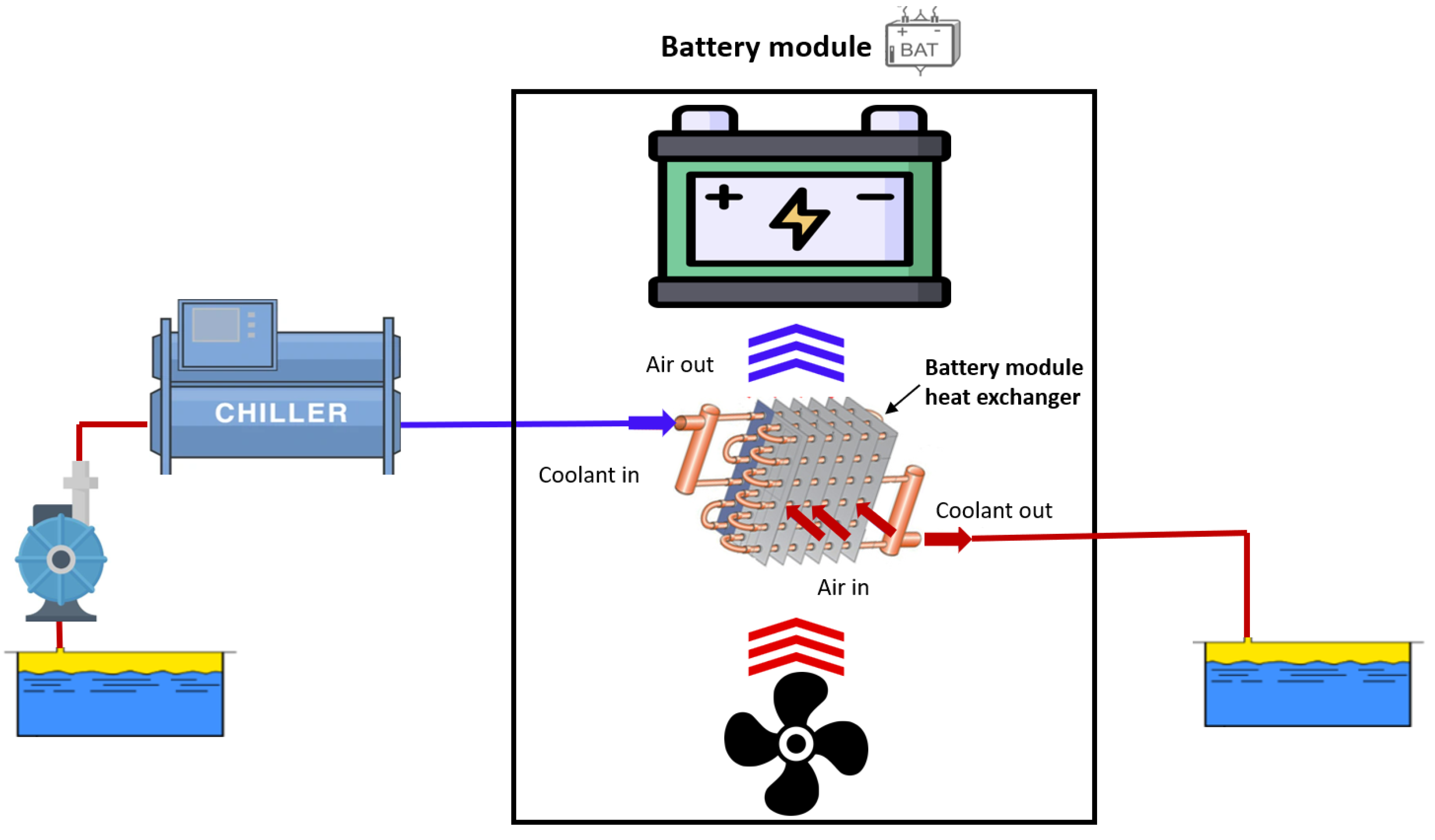


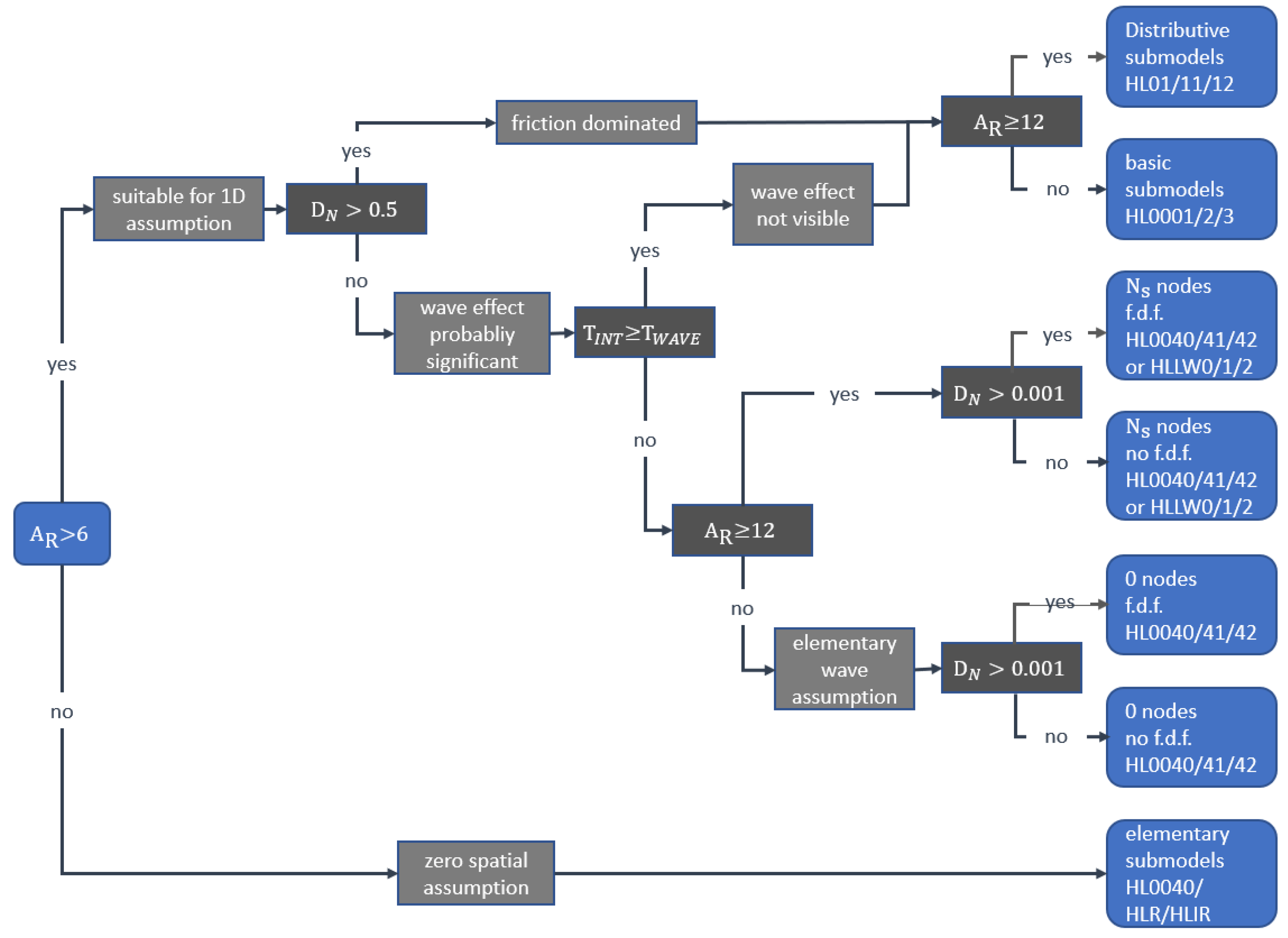

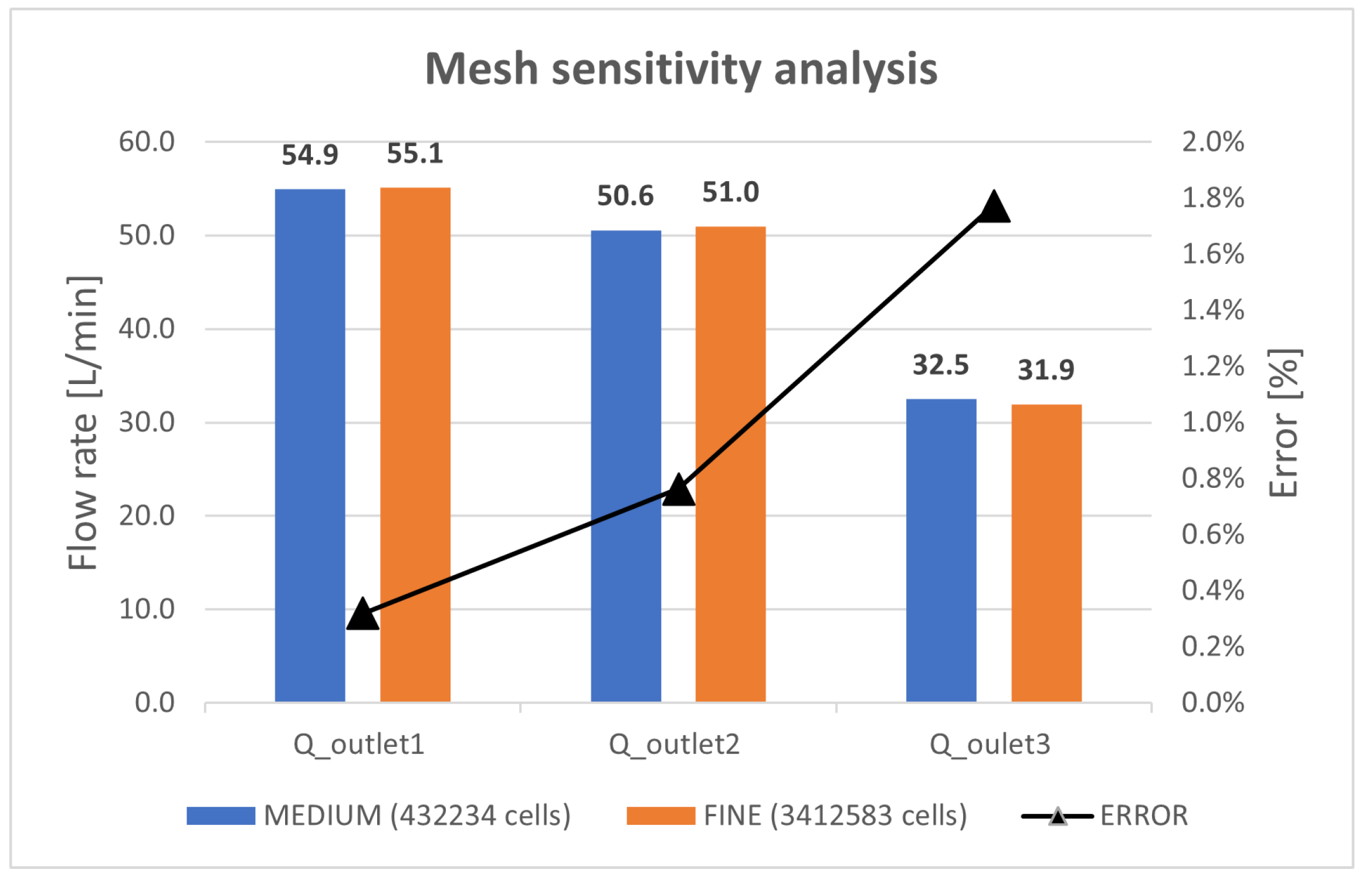
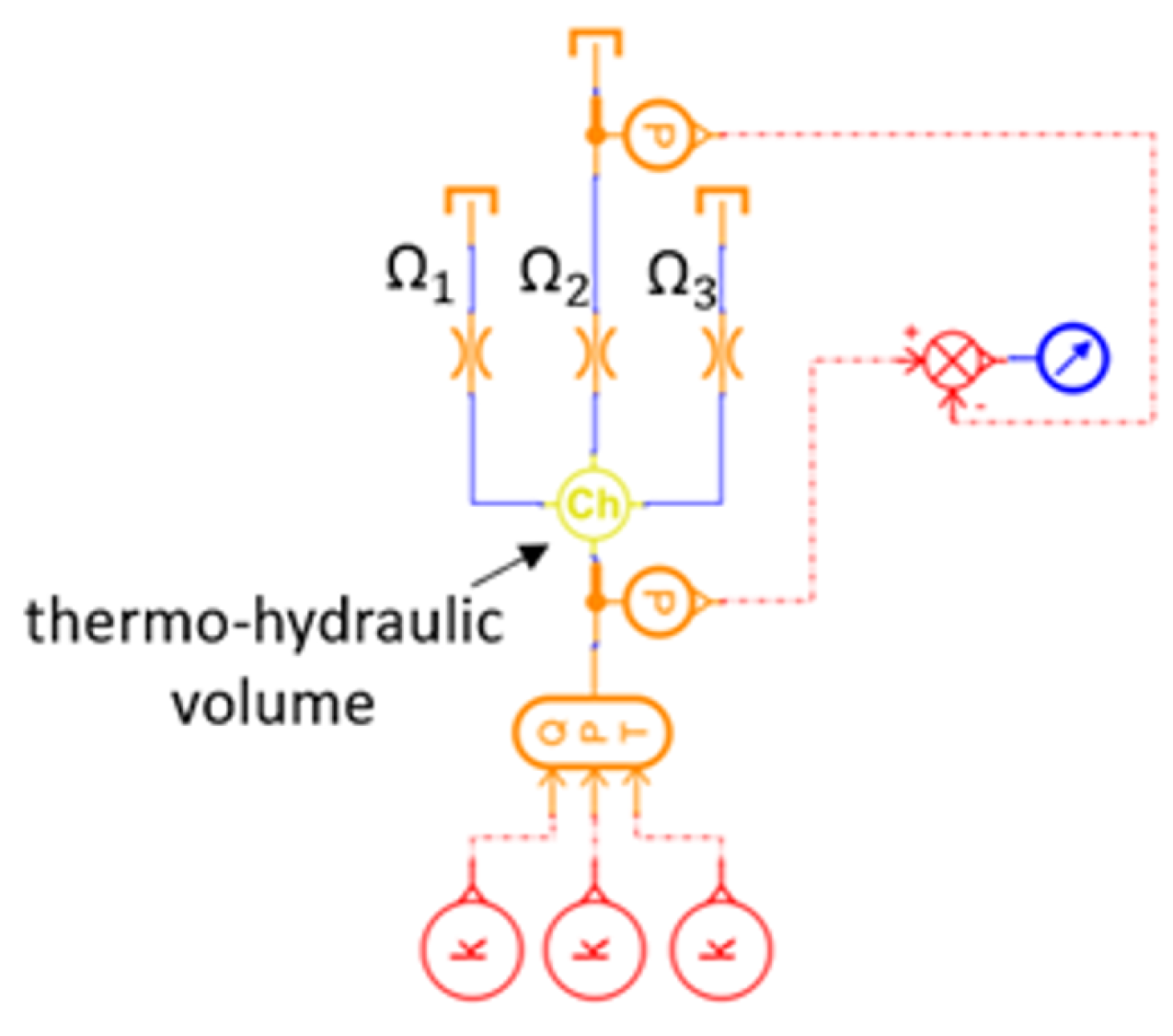

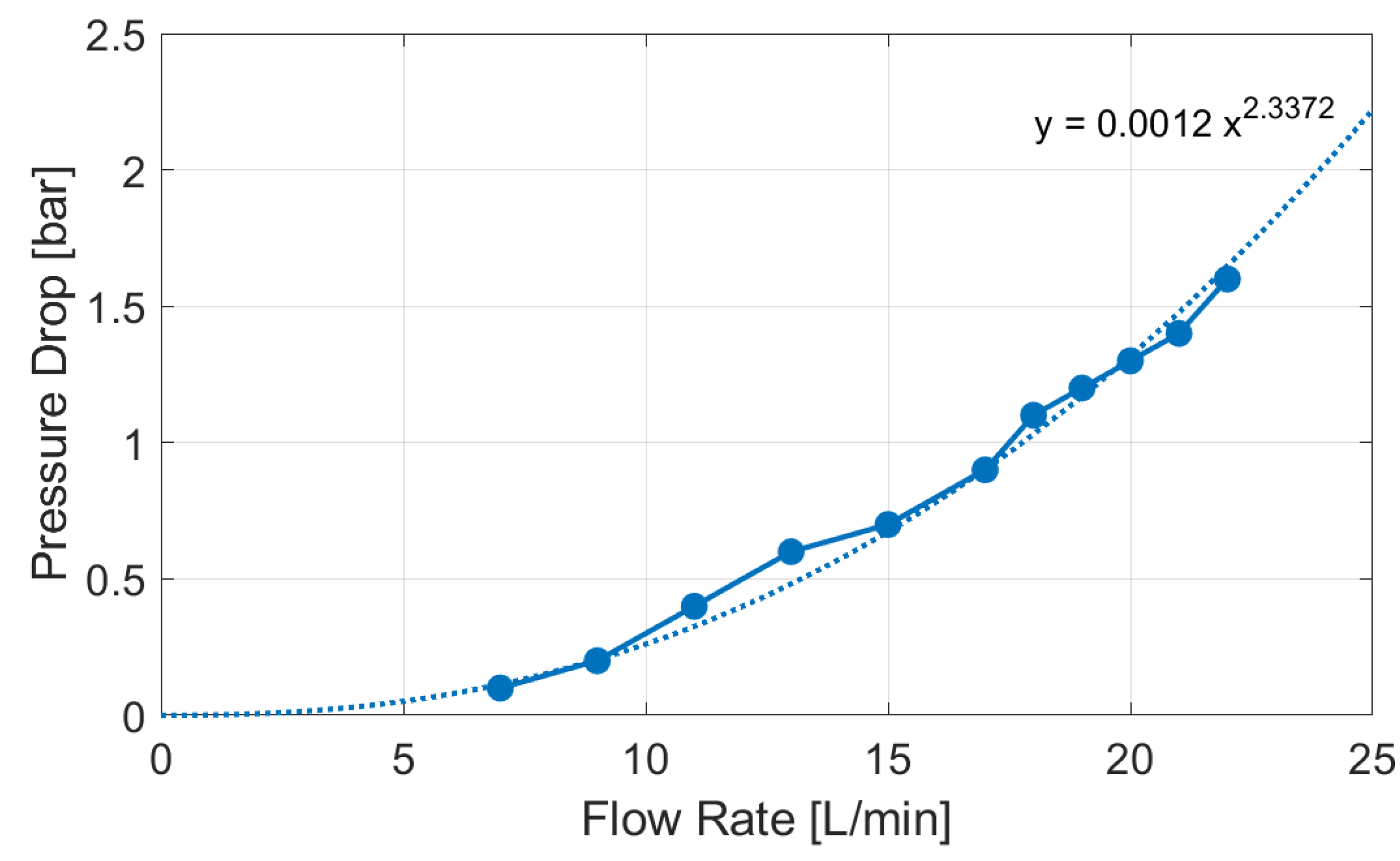
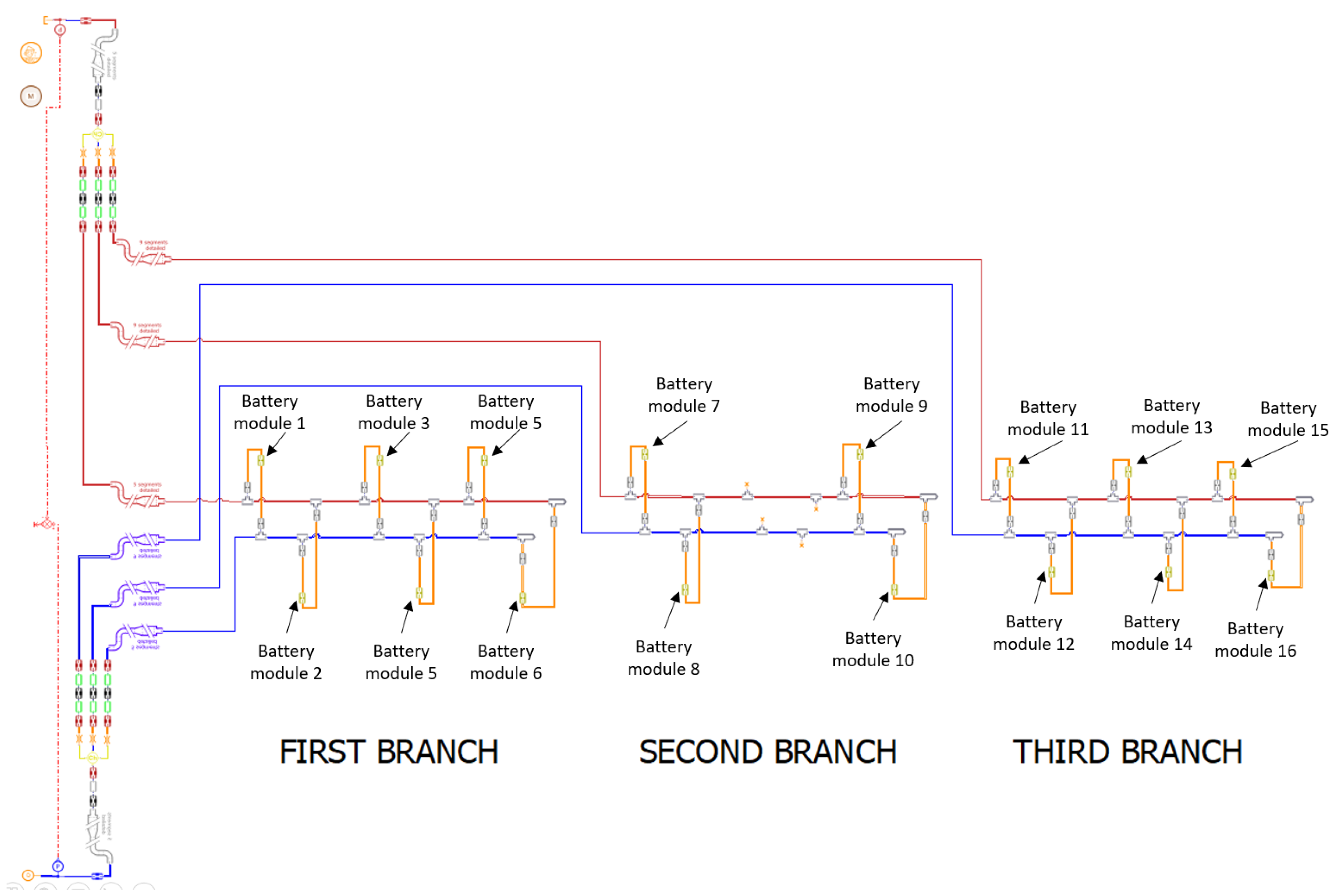
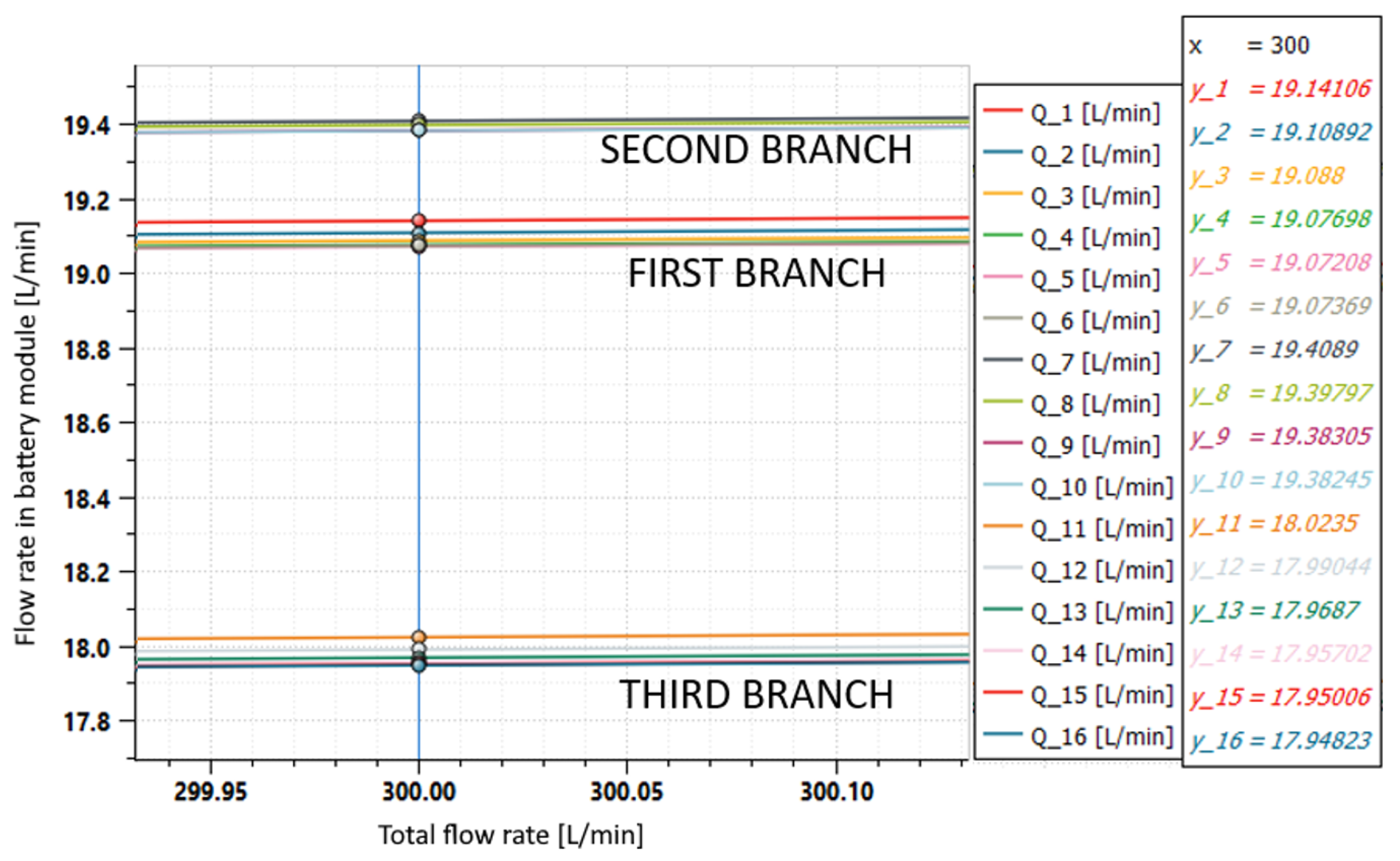
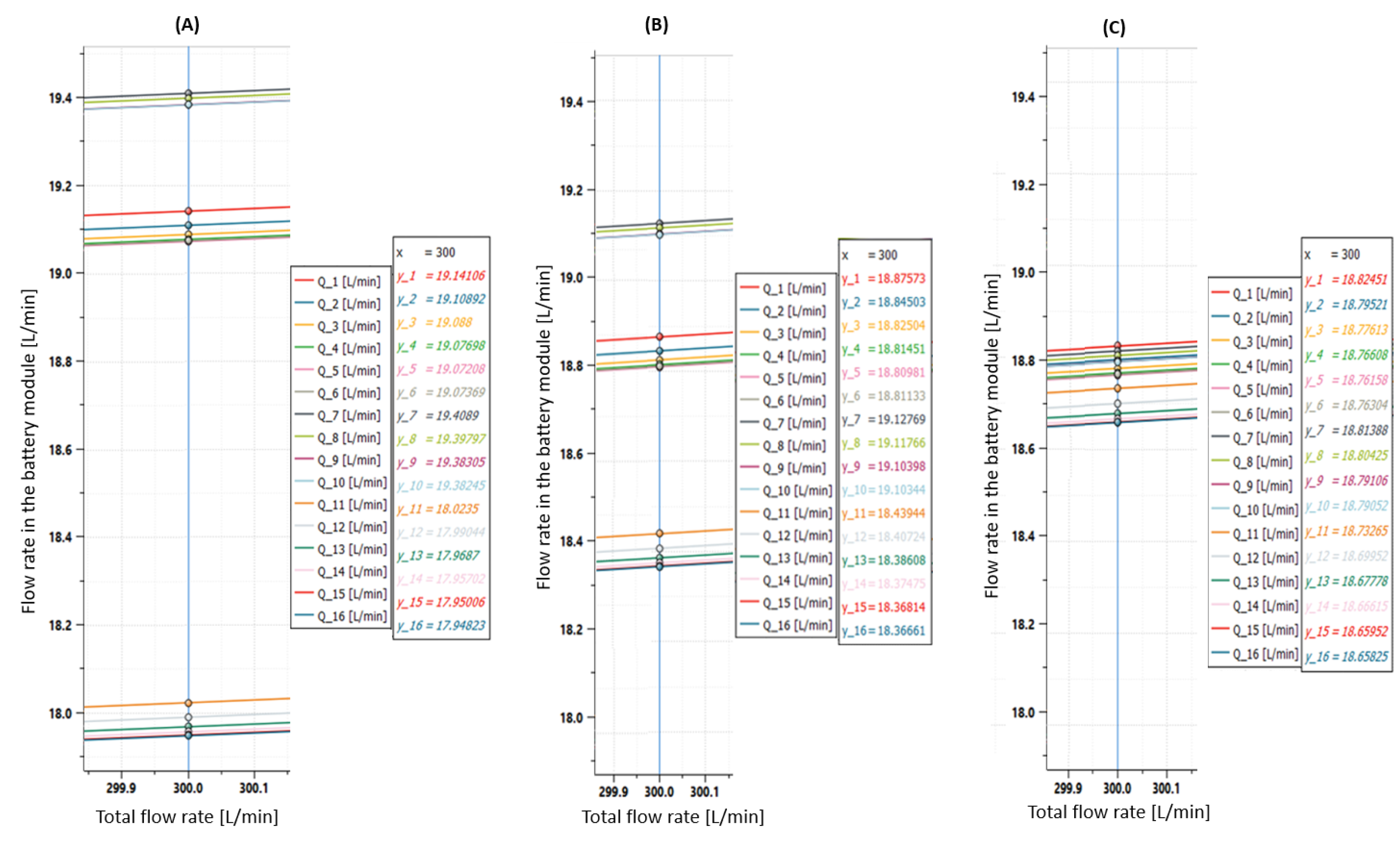
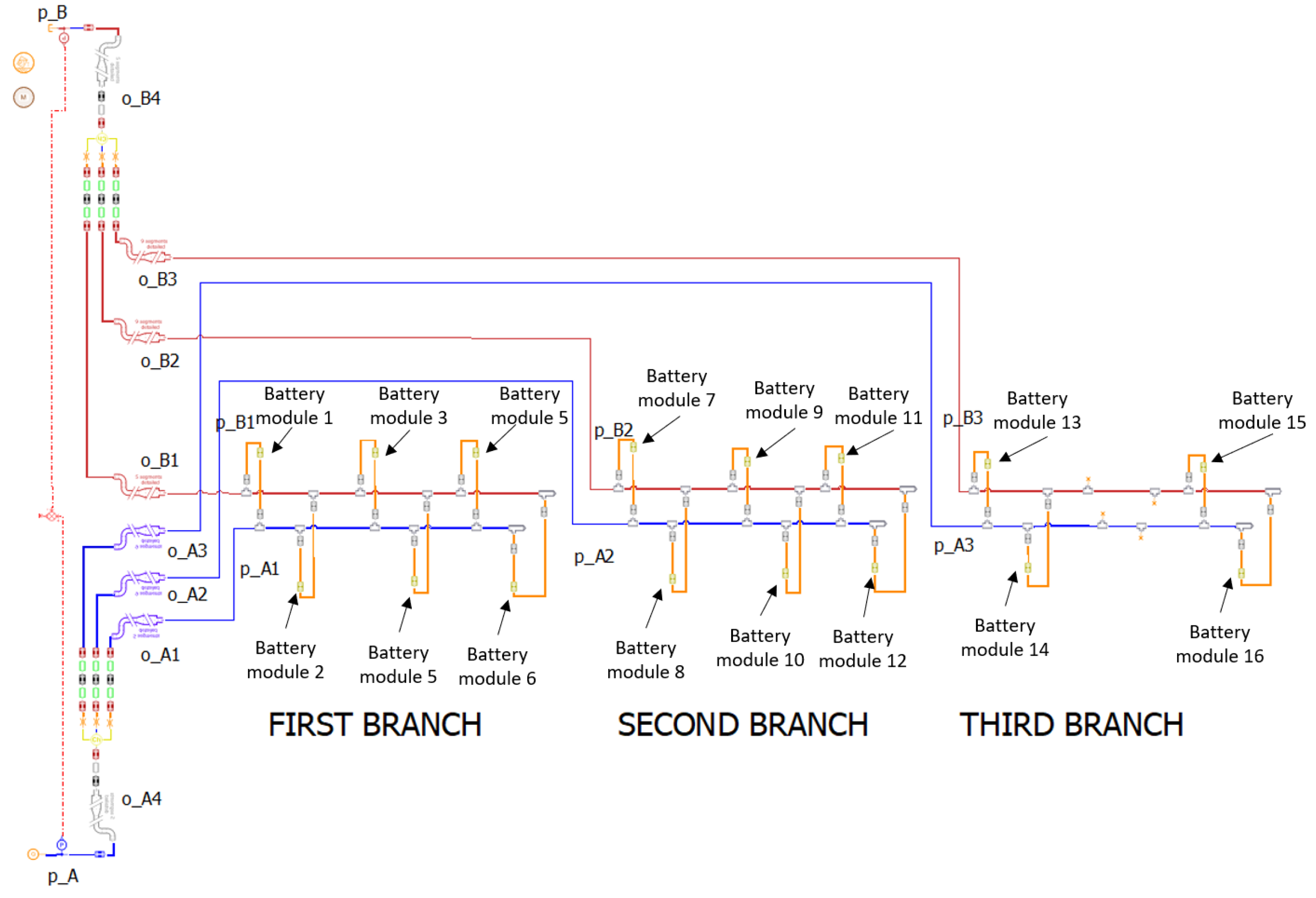

| Operating Condition | First Branch | Second Branch | Third Branch | ||||||
|---|---|---|---|---|---|---|---|---|---|
| Numeric (L/min) | Exp. (L/min) | Error % | Numeric (L/min) | Exp. (L/min) | Error % | Numeric (L/min) | Exp. (L/min) | Error % | |
| 1 | 53 | 52 | 2 | 0 | 0 | 0 | 0 | 0 | 0 |
| 2 | 0 | 0 | 0 | 53 | 52 | 2 | 0 | 0 | 0 |
| 3 | 0 | 0 | 0 | 0 | 0 | 0 | 67 | 62 | 8 |
| 4 | 50 | 49 | 2 | 50 | 49 | 2 | 0 | 0 | 0 |
| 5 | 42 | 43 | 2 | 42 | 42 | 0 | 54 | 52 | 4 |
Disclaimer/Publisher’s Note: The statements, opinions and data contained in all publications are solely those of the individual author(s) and contributor(s) and not of MDPI and/or the editor(s). MDPI and/or the editor(s) disclaim responsibility for any injury to people or property resulting from any ideas, methods, instructions or products referred to in the content. |
© 2022 by the authors. Licensee MDPI, Basel, Switzerland. This article is an open access article distributed under the terms and conditions of the Creative Commons Attribution (CC BY) license (https://creativecommons.org/licenses/by/4.0/).
Share and Cite
De Rosa, R.; Romagnuolo, L.; Frosina, E.; Belli, L.; Senatore, A. Validation of a Lumped Parameter Model of the Battery Thermal Management System of a Hybrid Train by Means of Ultrasonic Clamp-On Flow Sensor Measurements and Hydronic Optimization. Sensors 2023, 23, 390. https://doi.org/10.3390/s23010390
De Rosa R, Romagnuolo L, Frosina E, Belli L, Senatore A. Validation of a Lumped Parameter Model of the Battery Thermal Management System of a Hybrid Train by Means of Ultrasonic Clamp-On Flow Sensor Measurements and Hydronic Optimization. Sensors. 2023; 23(1):390. https://doi.org/10.3390/s23010390
Chicago/Turabian StyleDe Rosa, Raffaele, Luca Romagnuolo, Emma Frosina, Luigi Belli, and Adolfo Senatore. 2023. "Validation of a Lumped Parameter Model of the Battery Thermal Management System of a Hybrid Train by Means of Ultrasonic Clamp-On Flow Sensor Measurements and Hydronic Optimization" Sensors 23, no. 1: 390. https://doi.org/10.3390/s23010390
APA StyleDe Rosa, R., Romagnuolo, L., Frosina, E., Belli, L., & Senatore, A. (2023). Validation of a Lumped Parameter Model of the Battery Thermal Management System of a Hybrid Train by Means of Ultrasonic Clamp-On Flow Sensor Measurements and Hydronic Optimization. Sensors, 23(1), 390. https://doi.org/10.3390/s23010390










